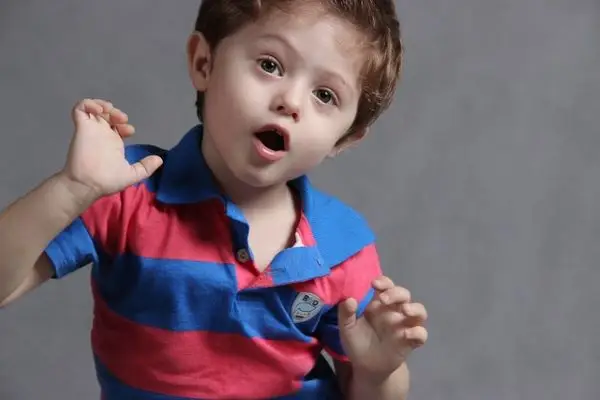Asthma in kids—it’s a topic that can feel overwhelming for parents. When your little one struggles to breathe, even for a second, it’s terrifying. But the good news is that asthma is manageable once you understand it better. Let’s explore asthma, why it happens, and how to help your child breathe easier—literally and figuratively.
Also, read: Now Know All about Pneumonia in Kids: A Common Respiratory Disease in Kids
What Exactly Is Asthma?
Asthma is a chronic condition that affects the airways in the lungs. In simple terms, those airways get inflamed, making it harder for air to move in and out. It’s like trying to breathe through a straw when you’re running out of air. Not fun, right? For kids, this can be scary and frustrating. (Source)
Asthma Through the Ages
Asthma has been around for centuries. The term “asthma” comes from the Greek word “aazein,” meaning “to pant.” Early descriptions of the condition date back to ancient Egypt and Greece. But it wasn’t until the 20th century that we began to understand asthma’s triggers and develop treatments. Thankfully, today we have tools and medications to help kids lead normal, active lives.
Key Facts About Asthma in Kids
- It’s Common: Around 1 in 12 kids in the U.S. has asthma, according to the CDC.
- Triggers Vary: Dust, pollen, smoke, exercise, and even stress can set off symptoms.
- Asthma Runs in Families: Genetics play a role, so if you or your partner has asthma, your child might too.
- It’s Manageable: With the right care plan, asthma doesn’t have to limit your child’s activities. (Source)
Symptoms You Shouldn’t Ignore
Asthma symptoms in kids can range from mild to severe. Here’s what to watch for:
- Frequent Coughing: Especially at night or early in the morning.
- Wheezing: That high-pitched whistling sound when they breathe.
- Shortness of Breath: Struggling to catch their breath after running or playing.
- Chest Tightness: Your child might say it feels like their chest is being squeezed.
- Fatigue: They may seem unusually tired after minor physical activities. (Source)
What Causes Asthma?
The exact cause of asthma isn’t entirely clear, but experts believe it’s a mix of genetic and environmental factors. Here are some common triggers:
- Allergens: Dust mites, pet dander, mold, and pollen.
- Respiratory Infections: Colds and the flu can worsen asthma symptoms.
- Smoke and Pollution: Secondhand smoke and poor air quality are big culprits.
- Exercise: Physical activity, especially in cold weather, can trigger symptoms.
- Weather Changes: Sudden temperature shifts can irritate sensitive airways. (Source)
Precautions and Prevention Tips
While there’s no surefire way to prevent asthma entirely, you can reduce the risk and manage triggers effectively. Here’s how:
- Avoid Smoke: Keep your home smoke-free, and avoid exposing your child to secondhand smoke.
- Control Allergens: Use allergen-proof mattress covers, vacuum regularly, and keep pets out of bedrooms.
- Maintain Clean Air: Use air purifiers and keep windows closed during high-pollen seasons.
- Promote Healthy Habits: Encourage regular exercise, a balanced diet, and plenty of sleep to strengthen their immune system.
- Manage Stress: Help your child cope with anxiety or stress, which can sometimes trigger asthma attacks. (Source)
Preventive Tests and Diagnoses
If you suspect your child has asthma, your pediatrician may recommend the following:
- Spirometry: A simple breathing test to measure lung function.
- Allergy Testing: Identifying allergens can help pinpoint triggers.
- Peak Flow Meter: A device that measures how well air moves out of the lungs.
- Chest X-rays: To rule out other conditions that might mimic asthma symptoms.
- Exhaled Nitric Oxide Test: This checks for inflammation in the airways.
How Is Asthma Treated?
The goal of asthma treatment is simple: control symptoms and prevent attacks. Treatment plans often include:
- Inhalers: These deliver medication directly to the lungs. You’ve probably heard of rescue inhalers (like albuterol) for quick relief and daily controllers to prevent symptoms.
- Nebulizers: A machine that turns the medicine into a mist, making it easier for younger kids to breathe it in.
- Allergy Medications: If allergies are a trigger, antihistamines or nasal sprays can help.
- Asthma Action Plan: A personalized guide from your doctor outlining what to do during flare-ups.
Home Care Tips for Asthma
Managing asthma at home doesn’t have to feel like a full-time job. With a few small changes, you can make life easier for your child:
- Create an Asthma-Friendly Home: Keep your home clean and free from dust, mold, and strong odors like perfumes or cleaning products.
- Stick to the Plan: Follow the doctor’s instructions, including daily medications, even if symptoms improve.
- Track Symptoms: Use a diary or app to note when symptoms occur and what might have triggered them.
- Stay Prepared: Always have a rescue inhaler on hand for emergencies.
- Teach Awareness: Help your child recognize early signs of an attack so they can alert you or their teacher.
FAQs About Asthma in Kids
1. Can asthma go away? Sometimes kids seem to “outgrow” asthma, but it can come back later in life. Regular check-ups are essential.
2. Is asthma contagious? No, asthma isn’t contagious. However, respiratory infections that worsen asthma can spread.
3. How do I know if it’s asthma or just a cold? If symptoms like coughing and wheezing persist for weeks or worsen with exercise, it’s worth checking for asthma.
4. Can my child still play sports? Absolutely! With proper management, kids with asthma can excel in sports. Olympians have done it—so can your child.
5. What should I do during an asthma attack? Stay calm, use the rescue inhaler, and follow the asthma action plan. If symptoms don’t improve, seek emergency care.
Final Thoughts
Asthma might be a lifelong condition, but it’s not a life sentence. With the right tools, knowledge, and a solid support system, your child can thrive. Think of asthma management as a team effort—you, your child, and their doctor all working together. And remember, every small step you take makes a big difference in helping your little one breathe easier.





